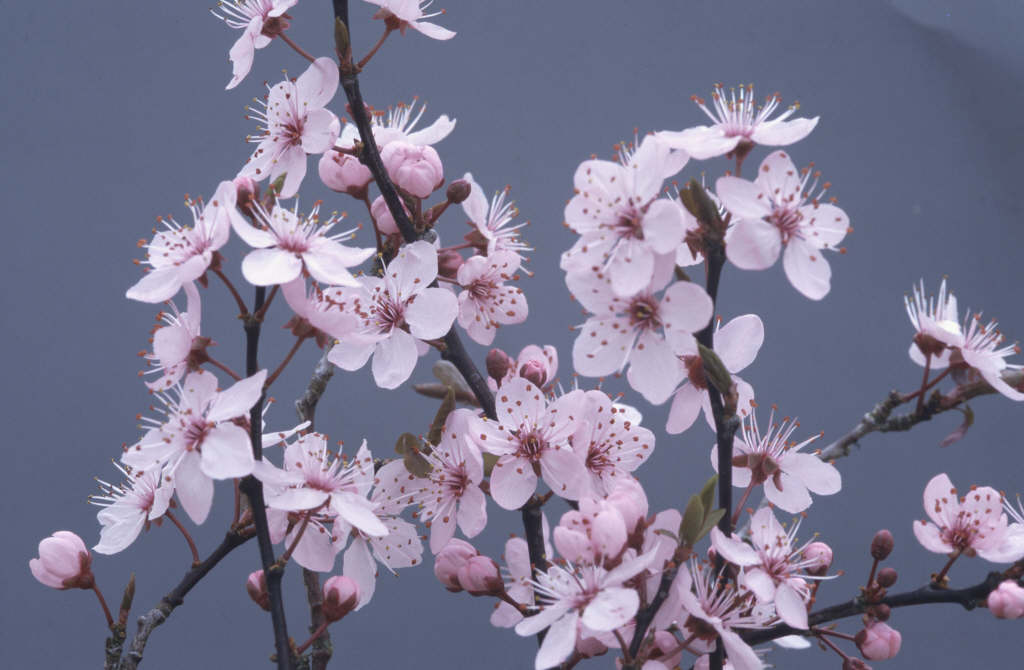Prunus cerasifera 'Nigra'

black cherry plum
A round-headed deciduous tree to 10m in height, with deep purple leaves, red when young and dark twigs. Single, pale pink flowers open from deep pink buds before the leaves in early spring
Size
Ultimate height
8–12 metresTime to ultimate height
20–50 yearsUltimate spread
Wider than 8 metresGrowing conditions
Moisture
Moist but well–drained, Well–drainedpH
Acid, Alkaline, NeutralColour & scent
| Stem | Flower | Foliage | Fruit | |
| Spring | Pink | Red | ||
|---|---|---|---|---|
| Summer | Black Purple | |||
| Autumn | Red | |||
| Winter |
Position
- Full sun
Aspect
South–facing or North–facing or West–facing or East–facing
Exposure
Exposed or Sheltered Hardiness
H6Botanical details
- Family
- Rosaceae
- Native to GB / Ireland
- No
- Foliage
- Deciduous
- Habit
- Spreading branched
- Genus
Prunus can be deciduous or evergreen trees or shrubs with showy flowers in spring, and often good autumn foliage colour. Some have edible fruit in autumn, and a few species have ornamental bark
- Name status
Accepted
How to grow
Cultivation
Grow in moderately fertile soil in full sun
Propagation
Propagate by chip budding or grafting, although softwood cuttings in early summer with bottom heat can be successful
Suggested planting locations and garden types
- Cottage and informal garden
- Wildlife gardens
- Low Maintenance
Pruning
Pruning group 1. Prune in mid-summer if silver leaf is a problem
Pests
May be susceptible to aphids, caterpillars, leaf-mining moths and bullfinches
Diseases
May be susceptible to peach leaf curl, silver leaf, bacterial canker, blossom wilt and honey fungus
Get involved
The Royal Horticultural Society is the UK’s leading gardening charity. We aim to enrich everyone’s life through plants, and make the UK a greener and more beautiful place.
